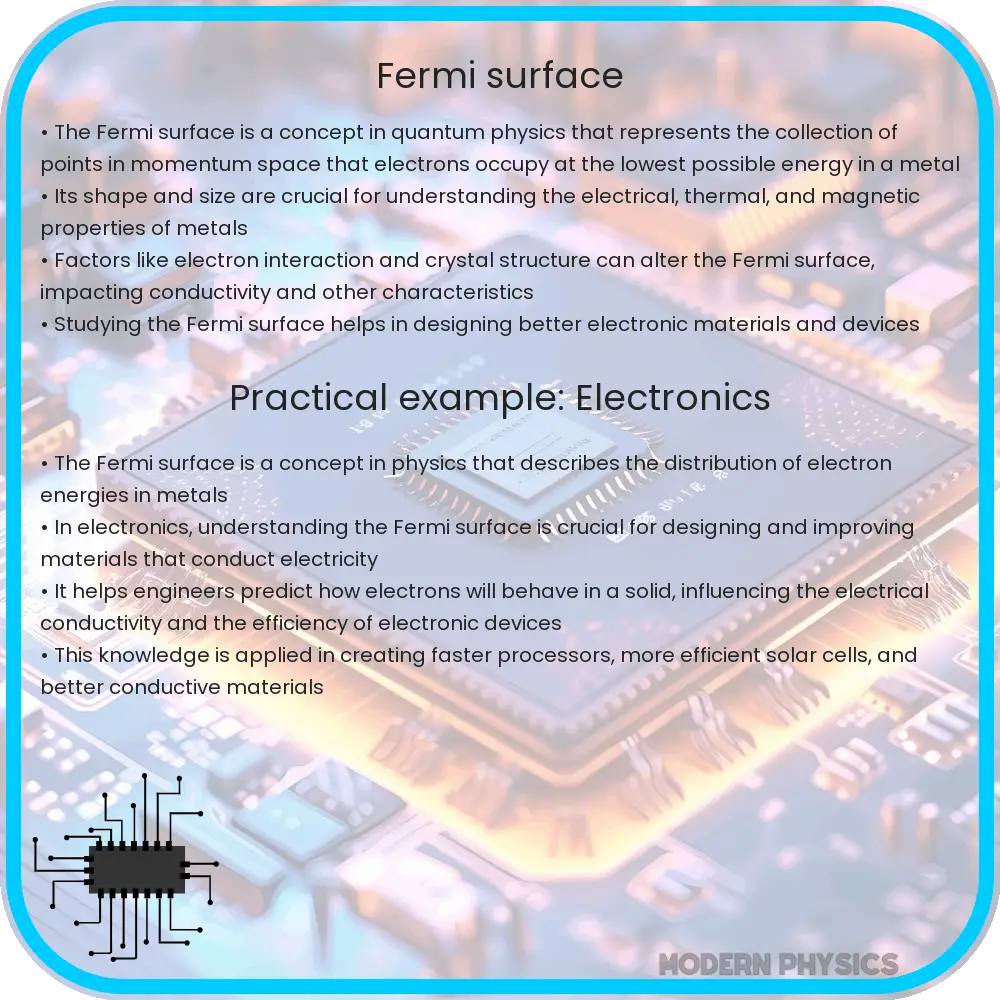Explore the significance of the Fermi surface in predicting material properties through mapping and analysis techniques, and its quantum state implications.

Understanding the Fermi Surface: Mapping and Analysis
The Fermi surface represents a fundamental concept in the field of condensed matter physics, serving as a crucial element in understanding the quantum states of metals and semiconductors. It delineates the boundary in momentum space that separates occupied from unoccupied electron states at absolute zero temperature. This intricate surface plays a pivotal role in determining the electrical, thermal, and magnetic properties of materials, making its mapping and analysis essential for both theoretical insights and practical applications.
Principles of Fermi Surface Mapping
Mapping the Fermi surface involves tracing the locus of points where the energy of electrons equals the Fermi energy (EF), in the absence of external forces. Advanced techniques such as angle-resolved photoemission spectroscopy (ARPES), de Haas-van Alphen effect, and quantum oscillation measurements have been pivotal in achieving detailed maps. These methods provide insights into the shape, size, and topology of the Fermi surface, revealing the distribution and dynamics of electrons within a material.
Quantum State Analysis Through Fermi Surface Studies
Understanding the quantum state of materials through Fermi surface analysis allows scientists to predict and manipulate their electronic properties. The shape of the Fermi surface can indicate the presence of various electronic phases, such as superconductivity, metallicity, and insulating states. Moreover, anomalies in its structure, like nesting features or flat sections, can lead to enhanced electronic interactions that are key to many exotic physical phenomena.
The study of the Fermi surface extends beyond theoretical interest, impacting the development of new materials and technologies. For instance, materials with highly anisotropic Fermi surfaces are often sought after for their unique transport properties, which are critical in the design of high-speed electronic devices and superconductors.
Through detailed mapping and analysis, researchers can not only predict the behavior of electrons in different quantum states but also tailor materials for specific applications, pushing the boundaries of current technologies into new realms of efficiency and capability.
Understanding the Fermi Surface
The concept of the Fermi surface is pivotal in solid-state physics, offering deep insights into the quantum state of electrons within metals and semiconductors. This surface represents the collection of quantum states occupied by electrons at zero temperature, just before additional energy is required for further excitation. The analysis of the Fermi surface enables scientists and engineers to predict and explain various electrical, thermal, and magnetic properties of materials.
Mapping the Fermi Surface
Mapping the Fermi surface involves sophisticated experimental techniques and theoretical calculations. One common method is angle-resolved photoemission spectroscopy (ARPES), which measures the energy and momentum of electrons ejected from a material by incident photons. This technique provides direct information about the electronic structure and has been instrumental in studying high-temperature superconductors and other complex systems. Computational methods, including density functional theory (DFT), also play a crucial role in predicting the shape and characteristics of Fermi surfaces, complementing experimental findings.
Analysis and Quantum State Implications
The analysis of the Fermi surface can reveal significant details about a material’s quantum state. For instance, deviations from the expected shape can indicate the presence of electron-electron interactions, electron-phonon coupling, or the emergence of exotic quantum phases like superconductivity. The topology of the Fermi surface—whether it is open or closed, its connectivity, and the presence of singularities such as van Hove singularities—also profoundly influences the material’s properties.
Conclusion
The Fermi surface is a fundamental concept in the understanding of the quantum mechanical behavior of electrons in materials. Its study not only sheds light on the fundamental properties of materials but also drives the discovery of new technologies, from superconductors to quantum computers. As experimental and computational techniques continue to evolve, the mapping and analysis of Fermi surfaces will remain at the forefront of condensed matter physics, pushing the boundaries of our understanding of quantum materials.
